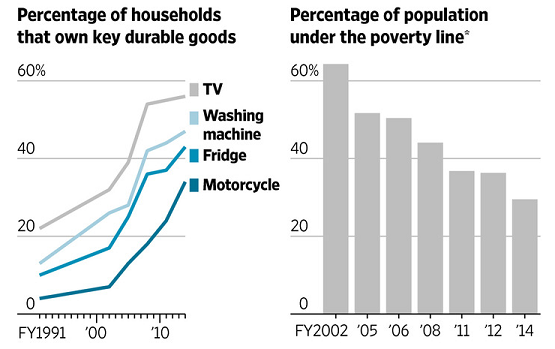Pakistan has made substantial progress in reducing poverty since the turn of the century, declining from 64.3% percent in 2001 to 29.5% percent in 2014. 38% of all households are now considered to be middle-class, while another 4% are upper class.
Hurricane-Strength Tailwinds Traverse Pakistan
Feb. 3.17 | About:
Global X (PAK)

Steve Auger
Research analyst, special situations, long/short equity, ETF investing
Pakistan, known for unrest, coups and poverty, has been making progress in the areas of security, politics, and economics over the past few years.
Economic growth is showing signs of sustained recovery, driven primarily by initiation of the China Pakistan Economic Corridor.
Pakistan will be reclassified from MSCI Frontier Markets to Emerging Markets coinciding with the May 2017 Semi-Annual Index Review. History shows that inclusion in the EM Index causes large stock.
The proposed trade is to buy PAK and hold until May 2017, when the MSCI Pakistan Index is formally included in the MSCI Emerging Markets Index.
The trade has multiple risks, including the working-age population, protectionism, weather, tensions in the
South China Sea, and political instability.
Pakistan has been making progress in the areas of security, politics, and economics over the past few years. The
first democratic transition from one elected government to another occurred in 2013, with the Pakistan Muslim League-N of Nawaz Sharif forming the government, based on a platform of private sector-led economic growth. The country has since struggled through
three tough years aided by low energy prices and
government reforms, with the end result being a more stable economy and a
bright outlook, more than can be said for many other countries.
Less poverty and increasing middle class
Pakistan has made substantial progress in reducing poverty since the turn of the century, declining from 64.3% percent in 2001 to 29.5% percent in 2014. 38% of all households are now considered to be middle-class, while another 4% are upper class.
Source: WSJ.com
As per the
Wall Street Journal:
[These middle class] households are likely to have a motorcycle,
color TV, refrigerator, washing machine and at least one member who has completed school up to the age of 16, the study found. Official figures show that the proportion of households that own a motorcycle soared to 34% in 2014 from 4% in 1991, and a washing machine to 47% from 13% over that same period. These trends are also attracting international business.
http://seekingalpha.com/article/4042606-hurricane-strength-tailwinds-traverse-pakistan











 But didn't the private organisations confirm that Pakistan had nuclear weapons capability when indian kind vehemently denied it?.......lol.........lol.........
But didn't the private organisations confirm that Pakistan had nuclear weapons capability when indian kind vehemently denied it?.......lol.........lol.........
